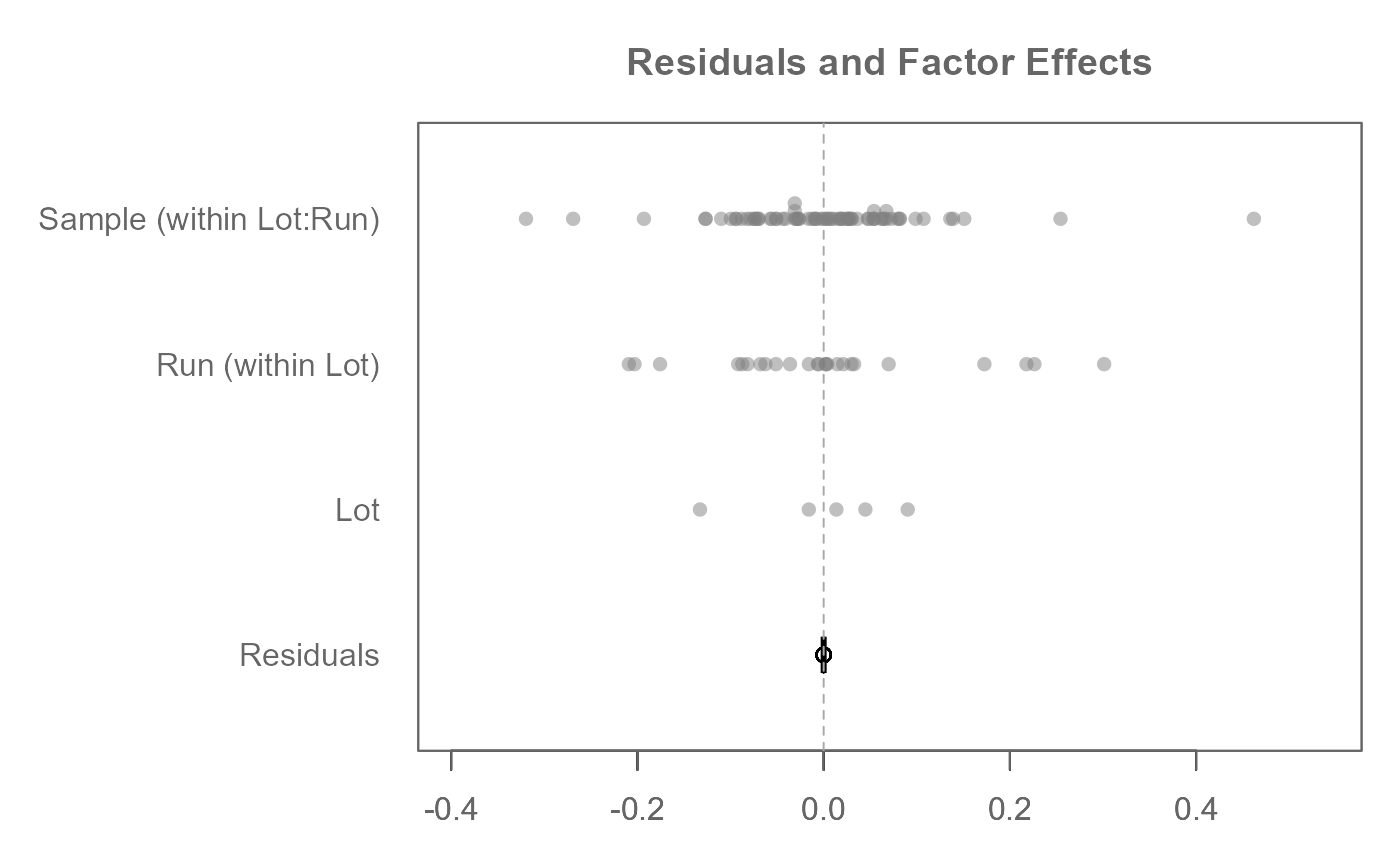This dataset contains measurements of light absorbance for
positive control samples from an ELISA (Enzyme-Linked Immunosorbent Assay)
test for HIV. Data are pulled from table 5-14 of the referenced
source.
The dataset is an example of a two-factor experimental design with nested
factors. The experiment involved five different production lots. For
each lot, five individual runs of the test were performed. Within each run,
absorbance readings were recorded for three positive control samples. As such
the Sample factor is nested under the Run factor which is itself
nested under the lot factor.
Format
A data.frame with 75 rows and the following columns:
- Lot
A character indicating the specific production lot of the ELISA test
A, B, C, D, or E.- Run
A character representing the individual test runs.
Runis nested withinLot, meaningRun 1forLot Ais distinct fromRun 1forLot B.- Sample
A character specifying the sample. There are three replicate samples per run.
- Absorption
A numeric vector representing the light absorbance readings (in arbitrary units) for the positive control samples. This is the response variable.
Source
Hoaglin, D. C., Mosteller, F., & Tukey, J. W. (1991). Fundamentals of Exploratory Analysis of Variance. Wiley.
Examples
# Partition response variable across ALL factors. Residuals should be 0.
M0 <- eda_mean_sweep(feav5_14, Absorption, Lot, Run, Sample,
nesting = list(c("Lot", "Run"), c("Run","Sample")))
plot(M0, rotate = TRUE)
